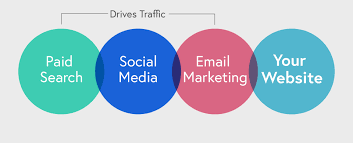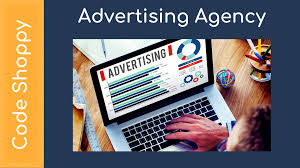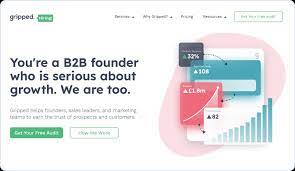The Ins and Outs of Online Advertising Costs
Online advertising has become a crucial component of marketing strategies for businesses looking to reach a wider audience and boost their online presence. However, understanding the costs associated with online advertising is essential for making informed decisions and maximising your return on investment.
Factors Influencing Online Advertising Costs
Several factors can influence the costs of online advertising campaigns:
- Ad Format: Different ad formats, such as display ads, video ads, or sponsored content, come with varying costs based on factors like placement and visibility.
- Platform: The choice of advertising platform, whether it’s social media, search engines, or third-party websites, can impact costs due to audience demographics and competition.
- Target Audience: Targeting specific demographics or interests may increase costs as you compete for ad space with other advertisers targeting the same audience.
- Bidding Strategy: In platforms that use a bidding system like pay-per-click (PPC), your bidding strategy can affect how much you pay for ad placements.
- Campaign Objectives: The goals of your campaign, such as brand awareness, lead generation, or conversions, can influence the overall cost of running ads.
Tips for Managing Online Advertising Costs
To make the most of your online advertising budget, consider these cost-saving tips:
- Set Clear Goals: Define your campaign objectives and target audience to ensure you’re investing in the right channels and strategies.
- Monitor Performance: Regularly track key performance metrics to optimise your campaigns and identify areas where you can reduce costs without compromising results.
- A/B Testing: Experiment with different ad creatives, copy variations, and targeting options to find the most cost-effective approach that delivers the best results.
- Budget Allocation: Allocate your budget strategically across different platforms and campaigns based on performance data to maximise ROI.
- Negotiate Rates: When working with publishers or ad networks directly, don’t hesitate to negotiate rates or explore discounts for long-term commitments.
- Ad Quality: Focus on creating high-quality ads that resonate with your target audience to improve engagement rates and lower overall costs over time.
In conclusion, understanding online advertising costs and implementing effective cost-saving strategies are essential for running successful digital marketing campaigns. By staying informed about industry trends and continuously optimising your campaigns, you can achieve better results while maximising your advertising budget’s efficiency.
Eight Advantages of Online Advertising Costs: Targeted, Cost-Effective, and More
- Highly Targeted
- Cost-Effective
- Measurable Results
- Wide Reach
- Flexible Budgeting
- Instant Impact
- Enhanced Brand Awareness
- Competitive Advantage
Challenges of Online Advertising Costs: Navigating Variability, Fraud, and Competition
- 1. Cost Variability
- 2. Click Fraud
- 3. Ad Blocking
- 4. Budget Overruns
- 5. Limited Control
- 6. Ad Fatigue
- 7. Competition
Highly Targeted
Online advertising offers a significant advantage in its highly targeted nature, enabling businesses to tailor their ads to specific demographics, interests, and behaviours. By leveraging advanced targeting options available on online platforms, advertisers can reach their desired audience with precision, increasing the relevance of their ads and enhancing the chances of engagement and conversions. This targeted approach not only improves the effectiveness of advertising campaigns but also helps businesses maximise their ROI by connecting with the right audience at the right time.
Cost-Effective
Online advertising offers a significant advantage in terms of cost-effectiveness, particularly when targeting niche audiences. In comparison to traditional advertising channels, such as print or TV ads, online advertising allows businesses to reach specific demographics with precision and at a fraction of the cost. By leveraging digital platforms and advanced targeting capabilities, advertisers can allocate their budgets more efficiently and generate higher returns on investment by focusing their efforts on reaching the right audience segments. This affordability and targeted approach make online advertising a valuable tool for businesses looking to maximise their marketing budget while achieving optimal reach and engagement within niche markets.
Measurable Results
Online advertising offers the significant advantage of providing measurable results. Through detailed metrics and analytics, businesses can track the performance of their online advertising campaigns in real-time. This data-driven approach enables marketers to gain valuable insights into audience engagement, conversion rates, and overall campaign effectiveness. By having access to such granular data, companies can make informed decisions and quickly adjust their strategies to optimise outcomes and maximise return on investment.
Wide Reach
With the internet’s global reach, online advertising offers the significant advantage of a wide reach, allowing businesses to connect with a vast audience spanning across various regions and time zones. This expansive reach enables companies to target specific demographics effectively and expand their brand visibility on a global scale, reaching potential customers who may not be accessible through traditional advertising channels. By leveraging online advertising’s wide reach, businesses can enhance their market presence and engage with diverse audiences to drive brand awareness and growth.
Flexible Budgeting
Online advertising costs provide the benefit of flexible budgeting, enabling businesses to adapt their spending according to campaign performance. This flexibility allows for real-time adjustments, ensuring that resources are allocated efficiently to maximise the impact of marketing efforts. By monitoring key metrics and making data-driven decisions, companies can optimise their budget allocation to achieve better results and ultimately enhance their return on investment in the dynamic landscape of online advertising.
Instant Impact
Online advertising costs offer the pro of instant impact, a significant advantage over traditional marketing methods. Unlike conventional strategies that require time to build momentum and yield results, online ads have the power to generate immediate visibility and engagement. With just a few clicks, businesses can reach a vast audience, drive traffic to their websites, and start generating leads or sales almost instantly. This real-time impact allows companies to adapt quickly to market trends, measure campaign performance in real-time, and make data-driven decisions to maximise their advertising efforts effectively.
Enhanced Brand Awareness
Consistent online presence through strategic advertising can significantly enhance brand awareness by increasing visibility and recognition among target audiences. By maintaining a strong and regular presence through online ads, businesses can reinforce their brand messaging, values, and offerings in the minds of potential customers. This increased exposure not only helps in building brand recall but also establishes credibility and trust, ultimately leading to improved brand perception and customer loyalty.
Competitive Advantage
Leveraging online advertising effectively can provide your business with a competitive advantage by enabling you to connect with potential customers before your competitors do. By strategically targeting and engaging with your audience online, you can establish brand awareness, drive conversions, and build relationships that set you apart in a crowded marketplace. Being proactive in reaching out to customers through online advertising can help you stay ahead of the competition and position your business as a top choice for consumers seeking products or services in your industry.
1. Cost Variability
Cost Variability is a significant con of online advertising costs as it introduces uncertainty and makes budgeting challenging for businesses. The fluctuation in costs, influenced by factors such as demand, competition, and ad placement, can lead to unexpected expenses and difficulties in predicting the overall expenditure of advertising campaigns. This variability makes it crucial for businesses to closely monitor and adjust their advertising strategies to accommodate cost fluctuations effectively while still achieving their marketing objectives.
2. Click Fraud
One significant con of online advertising costs is the prevalence of click fraud. Click fraud poses a considerable risk to advertisers, as it involves fraudulent clicks that artificially inflate advertising costs without resulting in genuine leads or conversions. This deceptive practice not only wastes budget but also distorts campaign performance metrics, making it challenging to accurately assess the effectiveness of ad campaigns. Advertisers must remain vigilant and employ strategies to mitigate the impact of click fraud to ensure their advertising budgets are utilised efficiently and effectively.
3. Ad Blocking
The con of ad blocking poses a significant challenge for online advertising costs. The rising prevalence of ad blockers among internet users diminishes the visibility and impact of online ads, ultimately jeopardising the effectiveness of advertising campaigns. As more individuals opt to block ads, businesses face the risk of their marketing efforts going unnoticed, leading to potential wastage of advertising budgets allocated towards reaching audiences that may never see their messages. Ad blocking underscores the importance for advertisers to explore alternative strategies to engage with audiences effectively in an environment where traditional online ads may not always reach their intended targets.
4. Budget Overruns
Budget overruns pose a significant challenge in online advertising costs. Without meticulous monitoring and effective management, it is all too common for online advertising campaigns to surpass budget projections. This can lead to financial strain and inefficiencies, impacting the overall success and ROI of the campaign. It underscores the importance of implementing robust budgeting strategies and closely monitoring performance metrics to ensure that costs remain within control and aligned with the set objectives.
5. Limited Control
One significant drawback of online advertising costs is the limited control that advertisers have over their campaigns. Ad platforms have the authority to change algorithms or policies at any time, impacting ad performance and costs without prior notice. This lack of control can lead to sudden fluctuations in campaign effectiveness and expenses, making it challenging for advertisers to predict and manage their advertising budgets effectively. Adapting to these changes swiftly becomes crucial in maintaining a competitive edge in the digital advertising landscape.
6. Ad Fatigue
Ad fatigue is a significant drawback of online advertising costs, as it can result in diminishing returns on ad spend. When an audience is repeatedly exposed to the same ads, they may become desensitised or disinterested, leading to decreased engagement rates and ultimately higher costs per acquisition. Managing ad fatigue requires a delicate balance of refreshing ad creatives, targeting different audience segments, and adjusting frequency caps to maintain audience interest and avoid oversaturation, ensuring that advertising campaigns remain effective and cost-efficient in the long run.
7. Competition
Intense competition for ad space in popular online advertising platforms poses a significant challenge for businesses of all sizes, particularly smaller enterprises. The high demand for visibility and engagement can lead to inflated advertising costs, making it difficult for smaller businesses with limited budgets to compete effectively against larger competitors. This competitive landscape underscores the importance of strategic planning and targeted approaches to maximise the impact of online advertising efforts while navigating the hurdles posed by fierce competition in the digital marketing arena.




